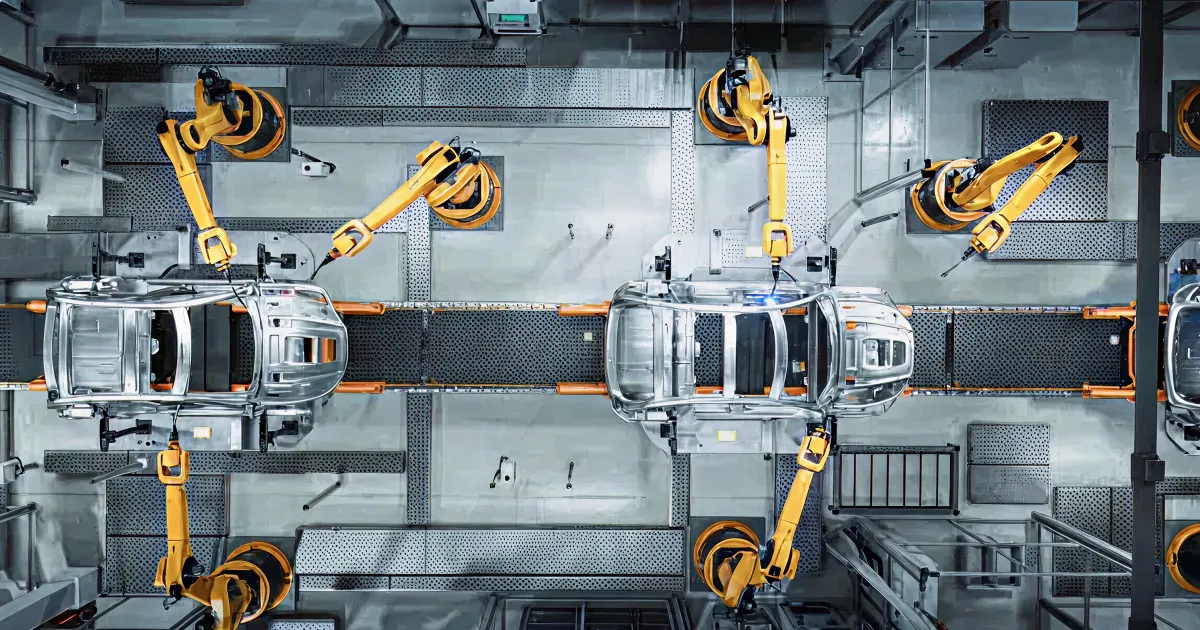The US Bureau of Labor Statistics (BLS) recently published a study which reveals that many manufacturers have reached a critical turning point. The study revealed that productivity rates across the manufacturing sector are on the rise. However, labor costs are growing as well, at a much faster rate. This means that even as factories become more efficient, it is more expensive to produce each unit of output. This phenomenon is creating a widening gap for manufacturers to address through new, strategic investments and operational innovation.
What the BLS Report Says About Manufacturing Labor
As previously mentioned, the Q1 2025 labor productivity report from the BLS shows some encouraging productivity gains, but also significant cost pressures. For example, manufacturing productivity increased 4.4% (which is the largest gain since Q2 2021), and output rose 4.8%, with hours worked increasing only 0.4%. The productivity jump was especially prominent in durable goods manufacturing, where there was a 7.2% productivity jump reflecting a 7.9% increase in output with only 0.6% more labor hours. All in all, these numbers indicate that manufacturers are producing significantly more, with only a marginal increase in labor.
When evaluating the numbers, the labor cost story is less optimistic. The BLS indicated that unit labor costs rose 2.0%, driven by a 6.4% increase in hourly compensation. These increases outpaced all productivity gains. Moreover, revised data showed prior estimates overstated productivity and understated labor cost increases in late 2024.
In conclusion, due to the fact that wages are rising at a faster rate than output per hour, per-unit costs are climbing. This signals a fundamental tension. Manufacturers are becoming more productive but are not seeing increased profit margins due to rising labor costs.
What This Means for Manufacturers
In the manufacturing industry, profit margins are already tight. Therefore, rising labor costs that exceed gains in productivity create significant financial pressure. While rising wages may be an indication of positive social development, this does not change the reality for many manufacturers. Rising wages are a huge challenge for cost management in manufacturing.
This means that it may no longer be enough for manufacturers to focus purely on increasing throughput or improving efficiency, as this will not be enough to maintain or grow margins. Instead, companies need to rethink their labor structure by optimizing human efforts that require skill and automating tasks that are repetitive, manual, or physically demanding.
This shift is particularly important for manufacturers competing on price or operating in markets sensitive to cost fluctuations. Without action, rising unit labor costs risk eroding competitive advantages and threatening long-term viability.
Rising Labor Costs: How Margins Erode Over Time
An increase in unit labor costs may seem modest when evaluated on a year-to-year basis, but when you factor in how it compounds over time, it can significantly impact a manufacturer's bottom line.
For example, in a factory with $10 million in annual labor expenses, a 2% rise in unit labor costs translates to an additional $200,000 per year. Over five years, that’s more than $1 million in increased labor expense (without factoring in any productivity gains or price increases).
For businesses operating with slim profit margins, these cumulative labor cost increases can:
- Squeeze cash flow
- Limit ability to invest in innovation
- Force price hikes that may reduce customer competitiveness
The problem is even more acute in labor-intensive operations such as manual palletizing, packaging, and materials handling, where labor makes up a large portion of operational expenses. Without strategic interventions, the gap between rising labor costs and slower productivity growth will continue to widen, threatening profitability and growth.
Where Automation Delivers the Most Immediate ROI
Automation is no longer something to consider a vague topic for the future. In fact, it is a proven strategy to tackle the challenges highlighted by the data put forth by the Bureau of Labor Statistics. Automation can deliver manufacturers with the quickest and most tangible returns in factory workflows characterized by:
- Repetitive and predictable tasks
- High physical demands
- Standardized processes with low variation
- Tasks with high error or injury risk
For example, below are some more specific processes with the most immediate potential for automation-driven gains:
Palletizing and Depalletizing
Manual palletizing is laborious and injury-prone. Automating palletizing:
- Reduces repetitive strain injuries
- Improves speed and accuracy
- Enables continuous operation without fatigue
Robotic palletizers consistently outperform manual labor in throughput, making them a compelling investment.
Pick-and-Place Operations
Involves moving products between stations or conveyors, a repetitive task ripe for automation. Benefits include:
- Reduced cycle times
- Enhanced precision
- Lower error rates
Packing and Case Erecting
Automated packing ensures consistent quality and speeds up throughput while freeing workers for more complex duties.
Quality Inspection
Machine vision systems can catch defects faster and more consistently than humans, reducing scrap and rework costs.
By focusing automation on these areas, manufacturers can quickly reduce labor costs, improve safety, increase throughput, and improve product quality.
How Robotics-as-a-Service (RaaS) Makes Automation Accessible and Flexible
Historically, automation was the domain of large manufacturers with deep capital reserves. Traditional solutions required significant upfront investment, long lead times, and complex systems integration. This created high risk and low flexibility for midsize or fast-growing companies navigating shifting production volumes or evolving customer needs.
Robotics-as-a-Service (RaaS) is transforming that reality.
With RaaS, manufacturers no longer need to purchase robots outright. Instead, they subscribe to automation on an hourly or monthly basis, much like software. This model brings a new level of accessibility, flexibility, and cost efficiency to industrial automation. Manufacturers can:
- Shift costs from capital expenditure (CapEx) to operational expenditure (OpEx), preserving cash flow and reducing financial risk
- Scale automation up or down with changing order volumes or seasonal demand, rather than being locked into rigid hardware infrastructure
- Avoid the burden of depreciation, obsolescence, or expensive hardware replacements
- Receive ongoing vendor support, including maintenance, software updates, and hardware upgrades so that systems stay reliable and cutting-edge
RaaS levels the playing field for smaller manufacturers and creates a more agile, resilient production model. Companies can adopt cutting-edge automation without the traditional financial or technical barriers, allowing them to compete more effectively and adapt faster in uncertain markets.
The Bottom Line: Preparing for a More Automated Future
The BLS data clearly signals that rising labor costs, even amid productivity gains, are challenging manufacturers to rethink operations. To maintain competitiveness, companies must:
- Understand where labor costs are increasing fastest
- Identify repetitive, high-impact tasks ripe for automation
- Consider flexible automation models like RaaS to reduce capital risk
- Invest in workforce transformation that leverages both human and robotic strengths
Manufacturers that embrace automation thoughtfully will improve margins, increase operational flexibility, and position themselves to thrive in an evolving market.
Next Steps for Manufacturers
For leaders looking to start or accelerate automation initiatives, consider:
- Conducting a detailed labor cost and process analysis to find automation opportunities
- Piloting automation in high-impact, repetitive tasks like palletizing or packing
- Exploring RaaS providers for flexible, scalable solutions
- Engaging cross-functional teams (operations, finance, HR) to align automation with broader business goals
As manufacturing enters a new era of complexity and opportunity, the companies that harness automation strategically will gain a lasting advantage.



